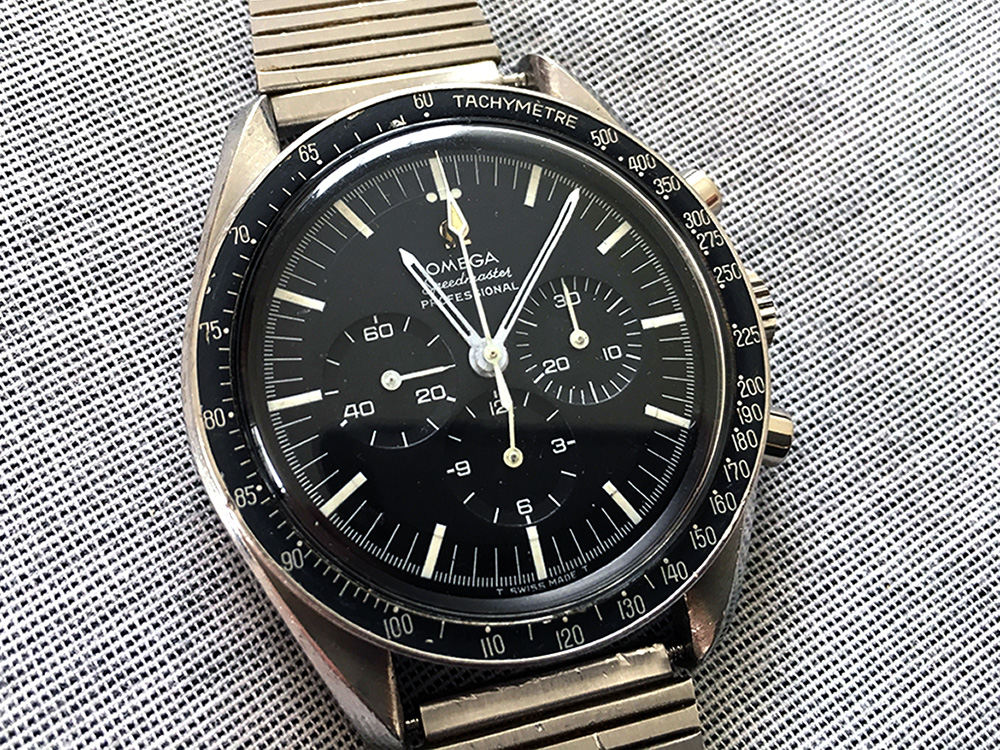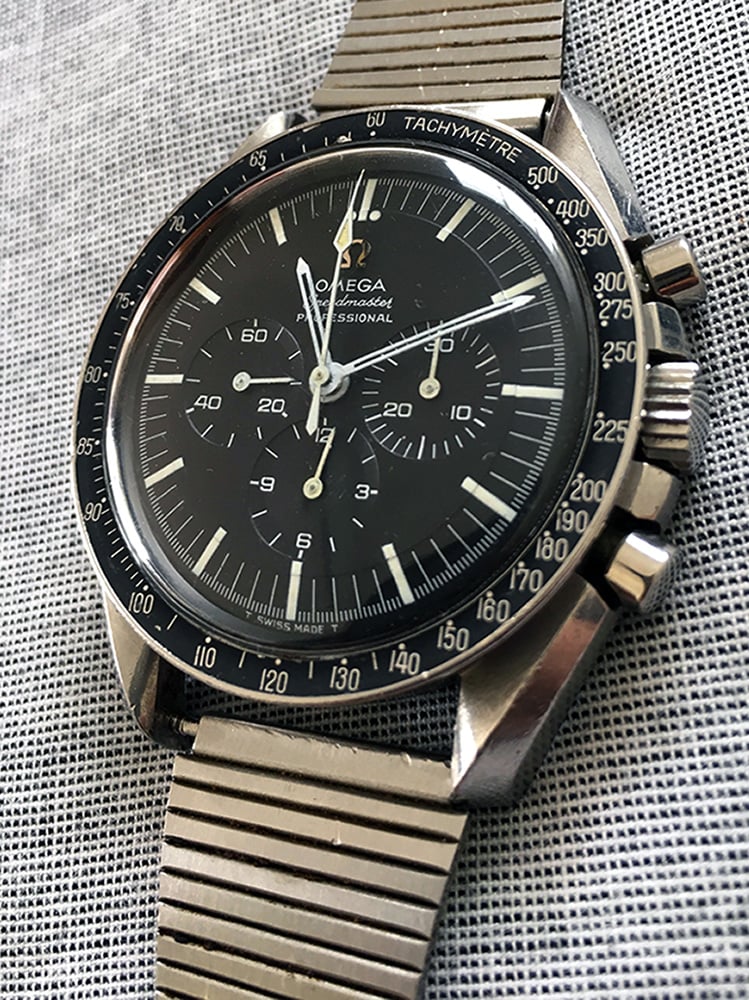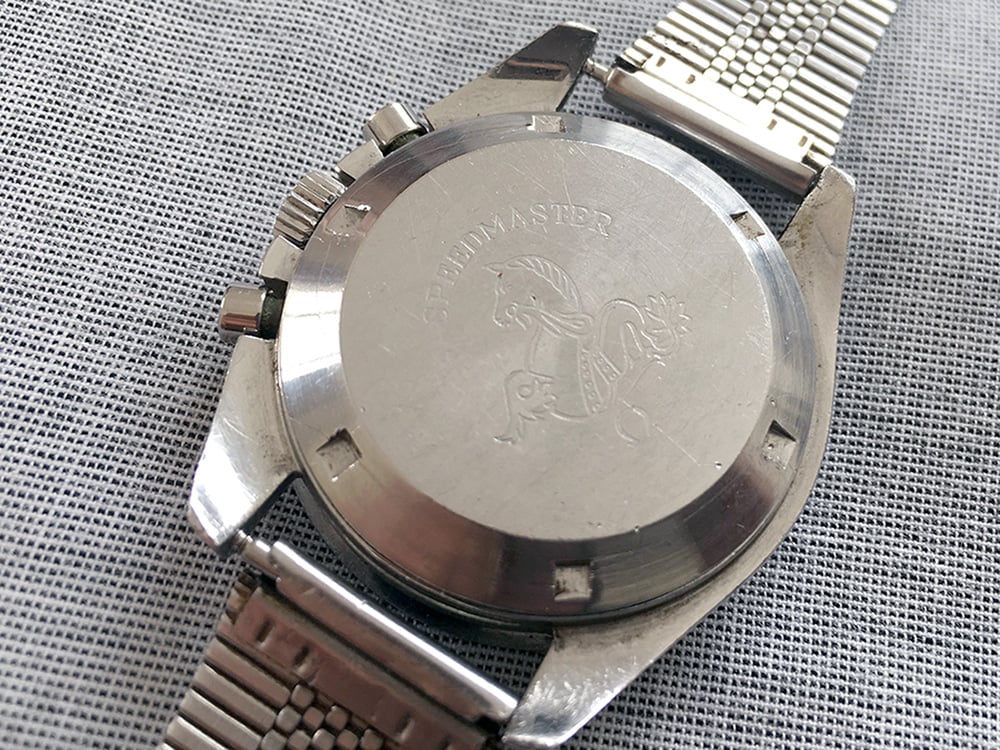FrankF
·Hi all,
I recent acquired a vintage Speedmaster Professional and so joined the forum hoping you guys could help me out with a few questions I have about it.
I’ve tried for the most part to do as much research, (albeit solely web-based) as I could into the exactly reference of my Speedmaster before coming here to bother you guys but I’ve hit a bit of a fork in the road as I see it.
From what I can tell, (and I won’t go into details because I’m sure you guys will quickly pick the markers up) this Speedmaster is either a 145.012 67/68, or 145.022 68 transitional.
The braclet, crown and pushers are no longer originals unfortunately I don’t think, and the lames are missing from the minute and hour hands.
I initially thought it could possibly be a 105.012 CB as they were brought out not only with a double step caseback, but with a single step caseback like this reference.
I decided against this idea based upon closer inspection of the lugs, which I don’t fit with a CB case.
So that leaves a 145.012 67/68, or 145.022 68 based on the spear-shaped chrono hand. The 145.022 69 featuring the flat ended hand.
I’m guessing a 145.012 67/68 based on this lug shape differences shown in this post:
https://atgvintagewatches.com/atg-vintage-watches-forum/1365-speedmaster-anorak-thread.html?highlight=speedmaster case
Is there any way to tell which reference this watch is without opening it up to check inside?
I’ve added some pictures for you to have a look at and see what you think.
Thanks in advance for the help guys.
I recent acquired a vintage Speedmaster Professional and so joined the forum hoping you guys could help me out with a few questions I have about it.
I’ve tried for the most part to do as much research, (albeit solely web-based) as I could into the exactly reference of my Speedmaster before coming here to bother you guys but I’ve hit a bit of a fork in the road as I see it.
From what I can tell, (and I won’t go into details because I’m sure you guys will quickly pick the markers up) this Speedmaster is either a 145.012 67/68, or 145.022 68 transitional.
The braclet, crown and pushers are no longer originals unfortunately I don’t think, and the lames are missing from the minute and hour hands.
I initially thought it could possibly be a 105.012 CB as they were brought out not only with a double step caseback, but with a single step caseback like this reference.
I decided against this idea based upon closer inspection of the lugs, which I don’t fit with a CB case.
So that leaves a 145.012 67/68, or 145.022 68 based on the spear-shaped chrono hand. The 145.022 69 featuring the flat ended hand.
I’m guessing a 145.012 67/68 based on this lug shape differences shown in this post:
https://atgvintagewatches.com/atg-vintage-watches-forum/1365-speedmaster-anorak-thread.html?highlight=speedmaster case
Is there any way to tell which reference this watch is without opening it up to check inside?
I’ve added some pictures for you to have a look at and see what you think.
Thanks in advance for the help guys.




